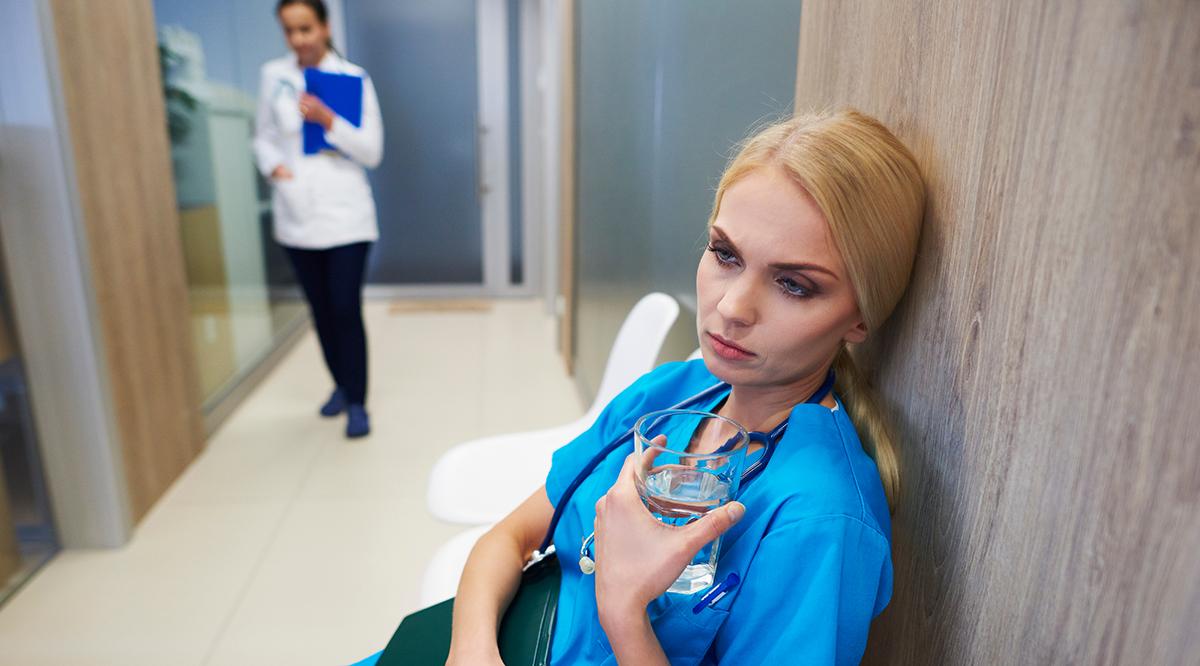Editor’s note: The opinions expressed by the author do not necessarily reflect the opinions of the AAMC or its members.
Medical students are known for being highly accomplished — but some experience significant challenges as well, including misuse of substances such as alcohol and marijuana.
A 2016 research report by the Mayo Clinic published in Academic Medicine analyzed over 4,000 medical student surveys and found that nearly one in three respondents met diagnostic criteria for alcohol dependence or alcohol use disorder. On a national level, this translates to medical students using alcohol at roughly double the rate of age-matched peers not in medical school. In some studies, large subgroups of medical students — up to 70% — reported consuming more than five drinks in one sitting, while nearly one in four students reported cannabis use, with men reporting higher use than women.
Not surprisingly, those who experience higher levels of burnout, depression, and low mental or emotional quality of life have a greater risk of problematic substance use. Unhealthy ways of dealing with the chronic stress of medical education as well as strong family history and genetic susceptibility to substance use disorders also play a role.
Interestingly, some studies have found that excessive alcohol use among medical students had limited impact on their performance during the clinical years of training. However, that ability to function at a high level in school may ultimately backfire, as students may delay seeking treatment.
The COVID-19 pandemic no doubt exacerbated all of these trends. In particular, the social isolation and stress of coping with an inordinate amount of illness and death caused significant deterioration in students’ mental health. Anxiety and depressive symptoms have exacerbated, while feelings of stress and isolation have spiked.
As students resume in-person learning and have more face time with peers, guidance on how to nonjudgmentally initiate conversations about concerning substance use may be helpful.
As a medical student myself, I have seen several students struggle with substance use and yet, I have not known how to help. Responses to a query on Facebook to my medical student peers found that many feel the same.
So, I spoke to Jonathan Avery, MD, director of addiction psychiatry at Weill Cornell Medicine and co-editor of Medical Student Well-Being: An Essential Guide, for advice. Here’s what he told me.
Familiarize yourself with the warning signs of substance use disorder and available resources in your medical school and community
Some medical schools incorporate content on general warning signs of concerning substance use into their curriculum. There are also many fact-checked websites that students can access on their own, or they can speak to mental health professionals if preferred. Knowledge of these signs is important to distinguish recreational substance use from heavy use bordering on the side of dependence to use disorders and functional impairment that is impacting patient care.
Also, prior to conversing with peers, familiarize yourself with what services your medical school offers. Some schools outline their policies and programs on intranet pages and in student handbooks accessible online. For example, NYU Grossman School of Medicine lists availability of voluntary and confidential services through the medical school’s Student Health Service as well the university’s Section on Tobacco, Alcohol, and Drug Use Education. University of California, Los Angeles David Geffen School of Medicine similarly outlines resources available through Counseling and Psychological Services (CAPS), a multidisciplinary student mental health center.
Indiana University School of Medicine has programs that allow students to get trained in mental health first aid, which serves as a bridge between initial help offered to a person and appropriate longitudinal treatment. The training helps students identify risk factors and warning signs of concerning substance use (and other mental health disorders), learn a 5-step action plan to help someone experiencing a crisis, and familiarize themselves with other evidence-based professional and self-help resources.
Sometimes handbooks also list resources that are in the community beyond the immediate perimeter of the medical school campus. For example, NYU SOM lists programs available in the New York City area including Alcoholics Anonymous, Marijuana Anonymous, and the National Drug and Alcohol Treatment Referral Routing Service. There are also resources available through Physician Health Services in partnership with local medical societies. For example, Harvard Medical School’s student handbook refers to a program offered by the Massachusetts Medical Society.
But many schools have insufficient information in student handbooks. In fact, a recent study in JAMA Psychiatry found that only a minority of schools’ policies met the AAMC’s published guidelines on developing comprehensive frameworks regarding medical student substance use. In these scenarios, students could contact their respective school’s Office of Student Affairs as a starting point and ask for options available for peers (while maintaining anonymity as needed).
Check in with the person directly
Avery acknowledges that peer conversations around substance use are in a “nebulous territory” and can often be “extremely dicey.” What makes them especially tricky is the murkiness underlying true recreational use and misuse (and conflating that prematurely with a disorder diagnosis), if the use is at work versus elsewhere, and if patients are at risk. “The stakes are of course higher when it involves patient safety,” he says.
The best starting point is to have a casual check-in with the person, preferably outside of work. You can say that you’ve been worried about them and wanted to see how they were doing. Ask how things are going and/or if anything is bothering them. Text messaging might be easier for some, while others may prefer a face-to-face conversation. Some people may feel singled out when inquired about a visible change, and respond better to a general conversation where concerns around substance use are subtly folded in. Evaluate the dynamics of the situation, check with the peer’s friends for advice if needed, and act accordingly. “A casual check-in can create a welcoming environment and not come across as a criticism or attack,” Avery says.
Have a conversation when everyone is level-headed
Avery emphasizes that being “cool and level-headed” is critical to having this conversation. “Make sure that you yourself are calm so that you can be nonjudgmental and create a safe space for your peer,” he says. Being impaired or altered yourself may impact the tone of the conversation and turn adversarial very quickly.
Don’t lecture, be an advocate
When talking to a peer about their concerning substance use, don’t lecture them. Ensure that you establish rapport as an ally and an advocate who cares about them. Contextualize by sharing what you’ve noticed and/or heard from other classmates and that you’ve been meaning to check in, and introduce them to the various resources. “Make sure that your observations and facts are accurate,” Avery emphasizes. If you say something that is untrue, the entire conversation will most likely backfire.
Don’t badger
Many people with concerning substance use — whether it is recreational or bordering on dependence or disorder — don’t perceive their use as concerning and may not feel ready to talk about it. They can get defensive and lash out instead. “Don’t take the bait and just let it go,” Avery says. Also, if they’re not volunteering any information or appear to be shutting down or have unconscious denial defenses, don’t badger. But if they are receptive, let them know what their options are and that you would love to be there for them if they need anything.
You are their peer, not their doctor
Avery feels that people are often “quick to diagnose substance use disorders with insufficient knowledge and/or data.” There are specific definitions for what qualifies as a use disorder compared to just concerning use, tolerance, or dependence. “Don’t say that you think your peer has an alcohol use disorder or cannabis use disorder or something else,” he says. Instead, say that you’ve been worried about them and wanted to check in.
Despite the best of intentions, these conversations can be extremely sensitive. But while it is hard to predict who will be receptive and who won’t, they are still conversations worth having and may allow people to know what options they have to address their substance use challenges before things spiral out of control.

